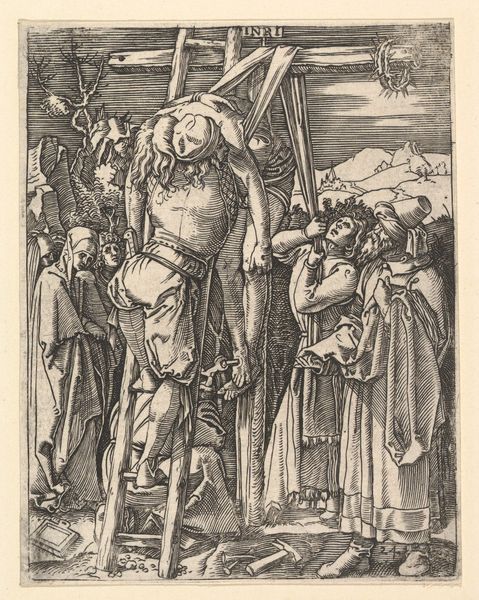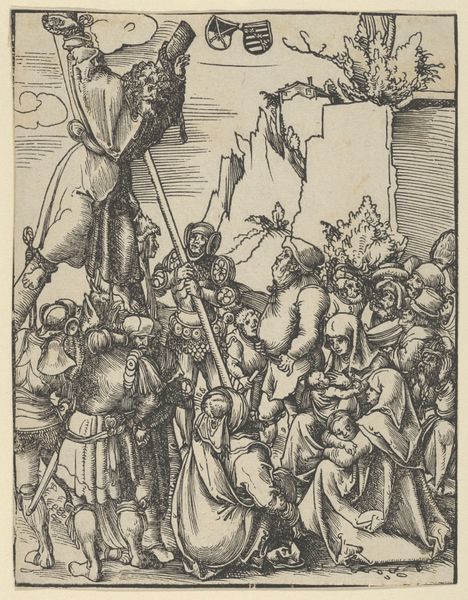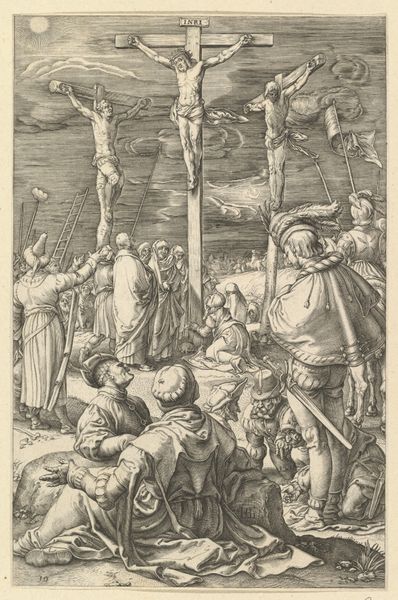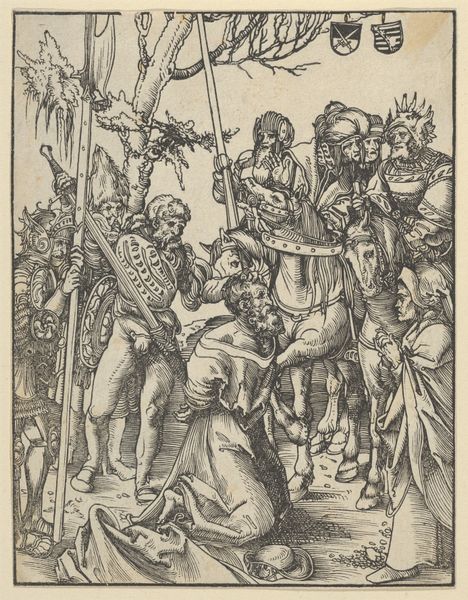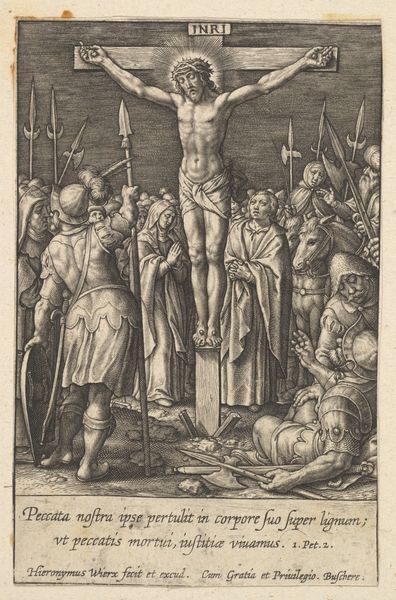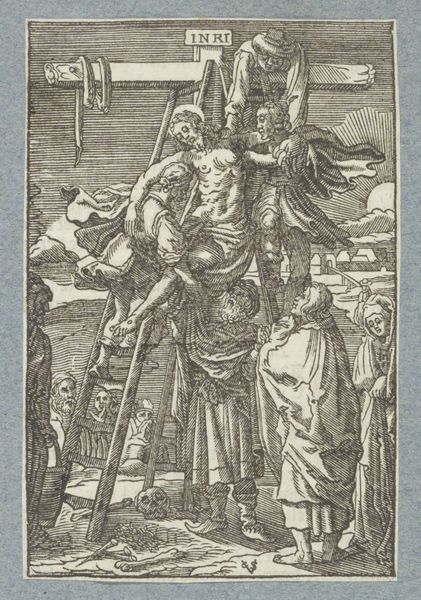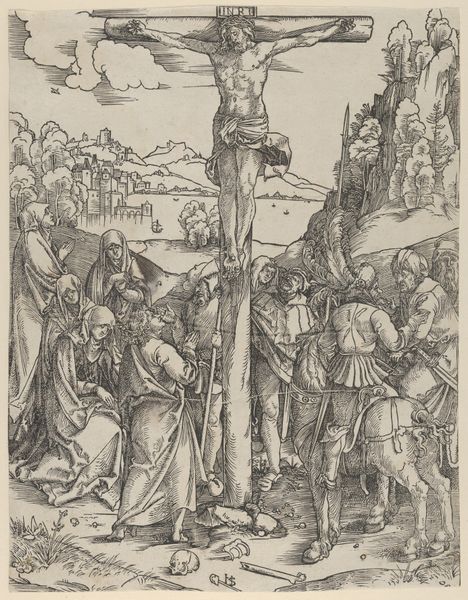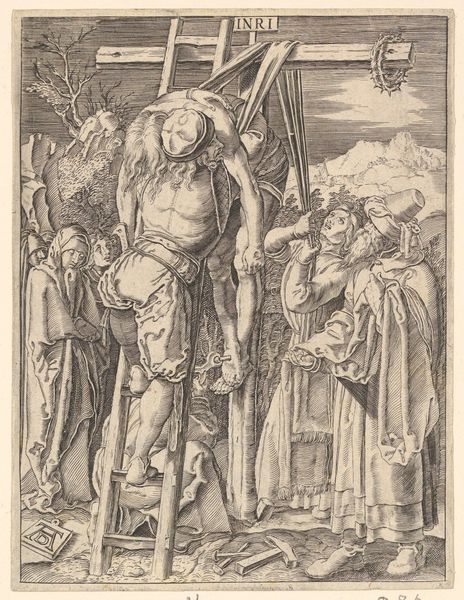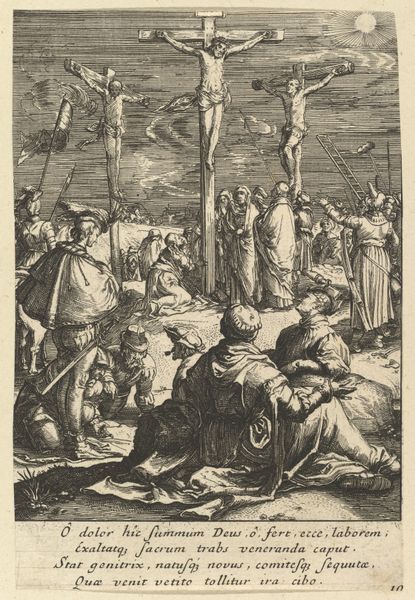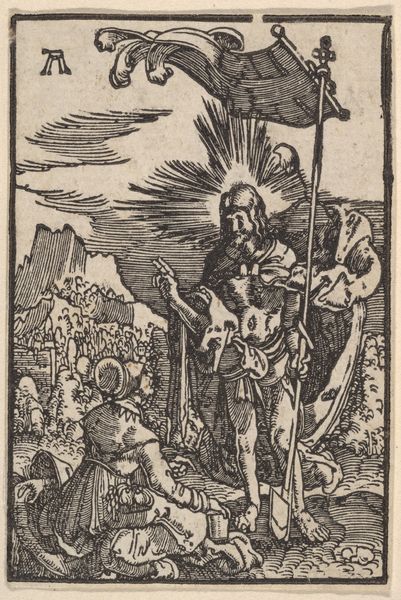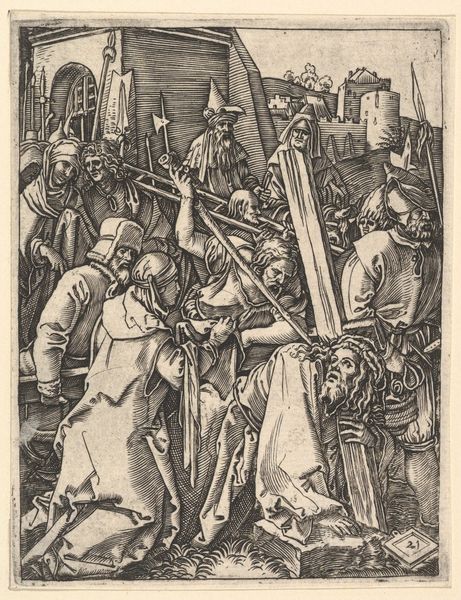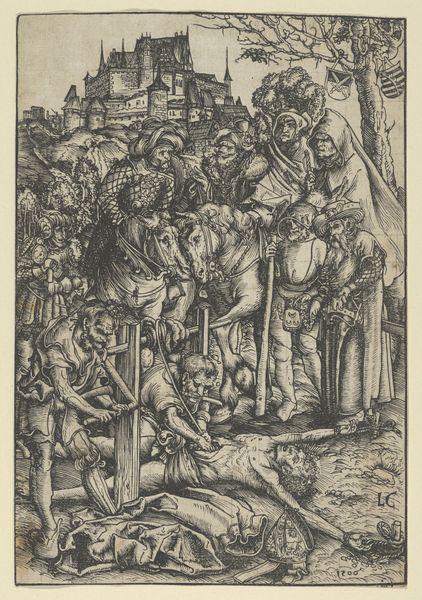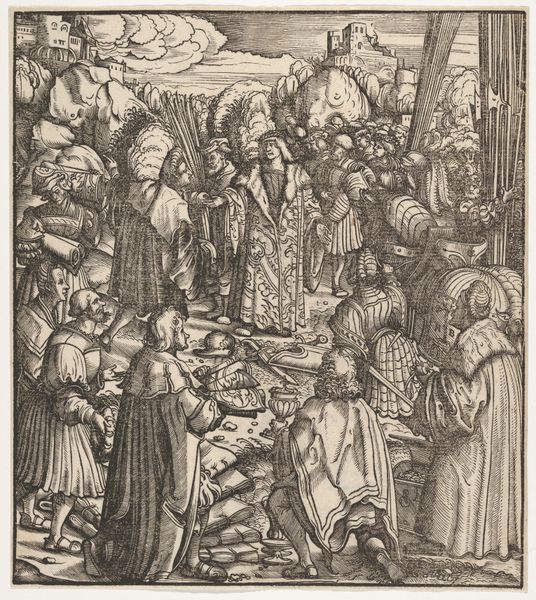
The Descent from the Cross, from The Small Passion 1509 - 1510
0:00
0:00
drawing, print, woodcut, engraving
#
drawing
# print
#
figuration
#
woodcut
#
history-painting
#
northern-renaissance
#
engraving
#
christ
Dimensions: sheet: 5 1/16 x 3 13/16 in. (12.8 x 9.7 cm)
Copyright: Public Domain
Editor: This woodcut is "The Descent from the Cross, from The Small Passion" made around 1509 by Albrecht Dürer. It feels very claustrophobic, with so many figures packed into a small space. What cultural meaning do you think Dürer was trying to express in this piece? Curator: I'm drawn to the positioning of Christ within a scene of societal structures of the time. Notice how Dürer has staged this profound religious moment, framing Christ’s suffering as both spiritual and intensely human. It’s critical to remember Dürer worked during the rise of the printing press; this image would have been widely distributed. Editor: That makes sense. It feels like a commentary on how everyone, from peasants to clergy, is affected by Christ's death. Curator: Precisely. How might his identity as a Northern European artist, far removed from the centers of Italian Renaissance art, have influenced his focus on such raw emotion? Consider too, the visual language of grief being portrayed here. Who has the privilege of displaying their sorrow, and who is expected to remain stoic? Editor: So, the people shown expressing sadness are also the people of privilege? I see your point. And perhaps that widespread availability via print served a purpose—a challenge to the status quo by portraying these figures as actively grieving. Curator: It invites a critical consideration of not just religious narrative, but also the way power dynamics affect our very expressions of grief and empathy. What do you think about the placement of tools in the left corner? Editor: That is a new element I haven't noticed before! Is it supposed to represent those complicit to the action? Curator: In a way. By understanding the societal influences, Dürer prompts us to see the image, not as a purely religious scene, but as a reflection of humanity itself. I would add to this: Christ himself, like today's working class, was himself, working until death, only to become immortal. Editor: I had never considered that angle, and the social commentary on such a famous moment really changes how I see this woodcut.
Comments
No comments
Be the first to comment and join the conversation on the ultimate creative platform.
